Household Items You Need to Stockpile
Being prepared is the best way to avoid panic!
“When the well is dry, we learn the worth of water.” ~Benjamin Franklin
Bugging in has many things going for it, but the biggest advantage is that you have access to an awesome survival resource: your home and everything in it. When you’re bugging out, you’ll have to grab what you can and go, but bugging in gives you access to everything. The key is to make sure your home contains everything you need to give you the best chance of survival.
Of course, you can’t rely on stocking up on essentials when a crisis hits. The Covid pandemic showed us all what panic buying looks like and any future crisis could easily have the same results. When people start to panic, they’ll strip the shelves of anything that might be useful, so if anxiety is already spreading, it could be too late to grab a few extra rolls of duct tape from the hardware store.
Survival is the ultimate come as you are party—and if you want to come as a well-stocked prepper, now is the time to build up your stocks of these useful household items.
Batteries
It’s hard to have enough batteries. Many flashlights, portable radios, and other small devices run on AA or AAA cells; larger flashlights often run on C or D cells. You can use batteries in DIY home projects; they’re a very useful thing to have around and a large stockpile of them will make post-crisis life much easier and more comfortable. One issue with batteries is that they can be expensive, but don’t be tempted to save money by buying no-name Chinese brands from the dollar store. Yes, they are cheap, but they don’t last long, and they are most likely to leak which can ruin vital equipment. Go for affordable but buy good quality brands instead. Costco and Amazon brands are good choices for durability.
Also look at rechargeable batteries. You can recharge these a hundred times and if you have a USB charger and a solar panel, it won’t even cost you any energy to do it. Many flashlights also run on 18650 lithium-ion batteries, and you’ll need a charger for those anyway, so why not get rechargeable AA cells at the same time?
Candles and Kerosene Lamps
They might be old-fashioned, but candles are still a great light source. They don’t need batteries or fuel, they can be stored for decades without losing effectiveness, and while they don’t throw off a lot of light, they do give out some heat too. Candles will still work after being soaked and they can be used to help start a fire in wet weather. Boxes of either stick candles or tea lights deserve a place in your stockpile. Kerosene lamp are not only a decorative to your home, but they will also burn brightly. We purchase a roll of wicks to cut the lengths we need and to make sure we don’t run out, also have a couple gallons of smokeless lamp oil readily available. An ample lamp can burn for weeks without a refill.
Vitamin Tablets
A simple daily multivitamin can keep you healthy even when your diet is poor. Don’t risk crippling vitamin deficiencies. Stock up on multivitamins and make sure you rotate your stock.
Matches
Matches are old-fashioned too, but they are cheap, light, and simple. If you keep them dry, they will last for years, so stock up when you get a chance. You might even want to think about getting several packs of waterproof matches also, especially if you’re into hiking and camping.
Butane Lighters
Don’t forget the cheap, disposable cigarette lighters. These are more fragile than matches, but also more resistant to dampness. Fire is so important for survival and it’s always good to have a few ways of starting one. (I will cover fire-starting in another post.)
Solar Panels
Not long ago, solar panels were big things that went on the roof of your house and specialist portable ones were unaffordable to most people. Now there are a lot of small, cheaper models available—you can get a lightweight 30W one for less than $50 and use it with a USB cable to recharge your devices or a power bank. You won’t be running a large appliance on one, but you can leave it to charge things while you get on with other tasks. Storing a few of them will let you keep rechargeable devices running when the power goes out. Look for bargains online or in local electronic stores whenever you see a good deal, grab one. If you can get a hold of one, a solar generator is a great piece of equipment. Combining a high-capacity power bank with a large solar panel array, these have standard electrical outlets and can power small appliances.
Seeds
Properly stored seeds don’t take up much space and can last for years. They’re also essential if you want to establish a vegetable garden. Many preppers go for the simple solution of buying a seed vault, which contains a variety of seeds already packed in a container designed for long-term storage. You can also pick up seed packets (preferably heirloom not hybrid seeds) every time you go to the store, you can build up an impressive collection rather quickly. Store them in a waterproof box and keep it somewhere cool, dry and dark. If you have a vacuum sealer, you can also seal the seeds into bags.
There’s no need to rotate seeds. When you add new packets you might as well keep the old packets as well. They are small and light, and while germination rate will slowly drop as the seeds get older, it can take decades for it to fall to zero planting probability. If even a few seeds from an old packet germinate, that’s still an extra few plants that can keep you alive.
Salt
This was covered in my first post about foods to stockpile. But as a reminder, in a crisis, when we are forging hunting, and eating vegetables from our gardens, you’ll need to add salt to our diets to stay alive. It’s also an excellent food preservative that can help you stay alive in the winter. The problem is that unless you live on the coast and have a salt pan to evaporate seawater in, salt is very hard to obtain. Stock up now. If you avoid fancy designer brands and stick with plain old table salt, it’s cheap to buy in bulk.
Medications
In a crisis a simple aspirin can make a big difference. Hard physical work leads to aches and pains and can be demoralizing. Anything takes the edge off is worth having, so get as much over the counter pain relief as you can. Stock up on other things too. Simple medications to treat diarrhea and constipation can make a post-apocalypse life a lot less important.
Before the 20th century an infected wound was often a death sentence. Now, it’s easily treated. The difference? Antibiotics. If you can get your hands on antibiotics, do it. FYI…Mexican pharmacies will sell over the counter without a prescription.
If that fails, tropical fish suppliers often stock antibiotics that are identical to human medications. Just make sure you know exactly what you have, what the dosage is, and what kind of infections it’s best against. Once you start taking antibiotics, make sure you finish the course. If you stop taking antibiotics when you feel better, you risk evolving antibiotic-resistant superbugs—and in a survival situation, that could be really bad news.
Water Filters
You can make water filters yourself. There are many different options, from cut-down bottles packed with activated charcoal to large, fixed filters using layered sand, gravel, and other materials to progressively remove particles from the water. Commercial filters most definitely have a place, though survival straw-type filter cartridges can be used to drink water directly from streams and pools. They can be rigged up with a water bag and used to fill bottles. Even a regular filter jug is a useful tool when you need to purify your own water, as long as you have a good supple of cartridges for it. These are expensive in stores, but generic ones can be found online much cheaper. Activated Charcoal
Bleach
Simple bleach has many survival uses. The most important is purifying water; add a quarter teaspoon of bleach to a gallon of water, mix in well, then let stand for a minimum of 30 minutes to give the bleach time to kill any microorganisms in the water. It has many other uses too. A bleach solution will disinfect kitchen tools and food preparation surfaces. If you’re treating sick people, dip rubber gloves in a mild bleach solution to prevent bacteria being transferred. A was with dilute bleach, then a rinse in clean water will sterilize baby toys, coolers, or bait boxes.
It's important that you get chlorine-based bleach. If bleach is advertised as safe to use on colored clothes, it’s probably made with peroxide and won’t be effective in killing germs. You will also need to look for plain bleach that does not contain any scents or other additives.
If you store bleach in a cool, dark place, it should last for around 6 months before it starts to chemically decompose. This means it isn’t something you can store long-term. Rotate your stockpile, using older bottles as you replace them with new ones, and if a crisis is developing, buy more to add to your supply. If you have bleach that’s past its sell date, don’t use it for purifying water, it cannot be relied upon. Just use it for general cleaning and disinfecting, though. Just increase the amount you use. Please note: **Bleach cannot remove water contaminated with chemicals, oils, poisonous substances, sewage, or any physical item contamination.
Alcohol
No, this isn’t essential for your survival. One the other hand, it’s a great barter material. Once the first surge of post-crisis looting has passed, a bottle of cheap vodka could be worth its weight in gold as a trade good.
Soap
In a survival situation basic hygiene is vital. Disease can spread quickly; regular hand washing is the best way to keep it under control. Keeping yourself clean will also help prevent minor injuries, like scrapes and cuts, from becoming infected. We’re all used to controlling minor infections with a quick visit to the doctor and of course, antibiotics. That might not always be an option, so it’s best to have plenty of soap available and use it regularly. Plain old-fashioned lye soap is a good choice, but any soap is useful, so if you see a bargain, consider adding it to your stockpile.
Baking Soda
Baking soda is one of those common, slightly old-fashioned household chemicals that really comes into its own in a crisis. It can be used for first aid; a paste of baking soda and water will soothe poison ivy or insect bites. Added to a bath it will take the sting out of a sunburn or diaper rash. Sprinkled on window ledges, it can deter bugs from coming into your home. It’s good for cleaning and odor removal. Best of all, it has a long shelf life, it’s easy to find, and it’s cheap.
White Vinegar
Another miracle substance, vinegar can be used to clean wounds, disinfect surfaces, and preserve food. Many people swear by the health benefits of apple cider vinegar, but a few gallons of plain old white vinegar should be in your stockpile.
Flashlights
Every prepper needs a good-quality flashlight (and, of course, a good supply of batteries) to keep it running. A stash of cheaper ones is also good to have too. Flashlights do get lost or broken and a cheap replacement is better than no replacement at all! It’s also a good idea to keep one in every room, in case the power goes off suddenly. That way, you’ll always be able to get some light quickly so you can get to work on dealing with the situation. Stick with flashlights that uses common battery sizes—D, AA and AAA cells, or 18650 rechargeables. Keep fully charged batteries in your EDC flashlights and the ones located around your home, but if you have a stock of spare ones in your stores, leave the batteries out to prevent power drain or leakage.
Fishing Gear
If there’s a body of water near you, fish could become a valuable food source. Of course, to catch fish you need fishing gear—and in a survival situation, you can’t spare the time to spend hours beside the lake with a pole in your hands. You’re going to want to set out lines and check them every day. That means you’ll need a heavy line for the mainline, lots of leader material, lots of sinkers, and lots of hooks.
Duct Tape
Duct tape is something no prepper can have enough of. It has an incredible range of uses, anything from patching tents, fletching arrows, or removing warts! A lot of the time when something breaks, a quick duct tape repair will hold it together long enough for you to get your tools out to do a proper job. Like most things, duct tape comes in different qualities. Expensive brand name tape will be stronger, stickier, and more resistant to heat, sunlight, water and chemicals than the cheap stuff. You should have a few rolls of high grade 90mph tape among your supplies. It’s a good idea to buy up a load of discount store duct tape as well. After all, not every job needs the best tape. If you have a big supply of cheap tape, you can use that for all the quick and dirty repairs and reserve the high-quality kind when it’s really needed.
Spare Clothes
Make sure you have plenty of work clothes. You’ll need them in a crisis. Look for comfort and durability—and don’t forget to stockpile plenty of underwear and socks. Old jeans or shirts that won’t do for going out anymore are still fine for working in, so add them to your stockpile. Working outdoors is hard on clothes. You’ll want to be able to carry out small alterations and repairs, so have a good supply of basic sewing supplies. Lots of all-purpose thread, quilting or upholstery thread are good choices for heavy thread, and a variety of needles are essential. A box of pins can make alterations much easier. Scissors or sewing shears. Thimbles are worth having too. If you’re not an expert and keep puncturing your fingers with a needle, that risks infection.
Footwear
Most preppers already have good outdoor footwear, but do you have spares. Even the best boots can fall apart and without specialist skills, they are hard to repair. A couple pairs of army surplus combat boots in your size are a valuable reserve. **A tube of rubber cement can be a quick fix for shoes soles that separate from the upper portion of your footwear.
Gloves
Protecting your hands is vital in an emergency. If they get injured, you’ll struggle to get tasks done. Find a good sturdy work glove that fits you comfortably and get several pairs. This is for ladies too! Also, a box of disposable gloves is good for they dirty jobs.
Gasoline
When panic buying starts, gasoline is often one of the first things people want to stock up on. Gas stations can become snarled with long line or short-tempered people desperate to fill their tanks. They can even become dangerous. Early in the Covid pandemic some people were trying to fill up garbage bags with gas. In a crisis, prices can also shoot up and of course, supplies can dry up altogether. Build up a gas reserve when times are good, then store it properly. Only used approved fuel containers and fill them right up to minimize the amount of air the gas is exposed to. Consider using fuel stabilizers to protect it for longer storage. These can be purchased from any auto supply stores, even Wal-Mart. Store your fuel in a well-ventilated space and check regularly for leaks. Gasoline needs care, because having large quantities of it around is dangerous, but can also be a life saver!
First Aid Kit
Every prepper needs a first aid kit in a proper box with a first aid guidebook. Future-proof it by stockpiling more flex and roll bandages, various sizes of gauze, surgical pads, and a good assortment of self-adhesive bandages, and surgical tape. Metal tweezers, EMT-style shears which have no trouble cutting through fabric tape or gauze, triple antibiotic ointment, hydrocortisone cream, Merthiolate or iodine, Tylenol, alcohol wipes, disposable non-latex gloves, preservative free eyedrops, Benadryl, moleskin for blisters, anti-diarrhea and nausea tablets, peroxide, Q-tips, and a syringe for irrigating wounds or irrigating ears. You should also have some safety pins for making a makeshift sling and smelling salts for those who fainted. You should also include epinephrine injectors, especially if you or someone in your family unit has severe allergies, especially to bee stings. You can purchase this off Amazon along with Narcan.
You can tailor a first aid kit for any situation, whether it be for camping, carrying in your vehicle, or hiking in the wilderness. You can purchase first aid kits of any size, and some that also have CRP masks and instructions. You may think also about adding suture kits with needles off Amazon for $13.99.
Zip Ties
Cable ties aren’t as versatile as duct tape, but they come close. They’re quick, easy to fasten, strong, secure, and come in a huge range of sizes. You can use them to fasten insulation around a pipe or fix cables to a frame. You can use them to tie down tarps, although it is better if you fasten them through eyelets rather than punching holes or slits in the tarp since that creates a weak spot in the tarp. Any size zip tie can be useful, and if you need a smaller one, you can always cut down a bigger one to fit. So, focus on six-inch ties or longer. Hardware stores often sell cheap packs of assorted ties, and these can be a good way to build up your supply.
Multitools
This is something my guy never leaves home without! A quality multitool is a survival essential and makes a good Christas stocking stuffer (hint hint). Something like a Leatherman Super Tool or Wave fits easily in a pocket or on your belt but gives you quick access to a whole range of tools. The only problem with Leatherman tools is that, at well over $100 for most models, they’re expensive, but worth the money. Having a couple cheaper replacements on a shelf so you can replace a lost or broken one in an emergency just isn’t affordable to most people. On the other hand, most hardware stores sell Leatherman clones for less than $20. Are they as good as the real thing? No, of course, not—but 90% of the time they are good enough. They’re also affordable enough that you can stash a couple aways as spares.
Leatherman style folders aren’t the only multitool options, either. There’s a whole range of one-piece steel multitools out there, too. Some are designed to fit in a credit card slot in your wallet, or a woman’s purse (yes, I have one), others come in novelty shapes. What they all have in common is they include several useful tools, like screwdrivers and usually some kind of cutting edge. They only cost a few dollars, and they are great for EDC (everyday carry), giving to kids so they can have a survival tool of their own, or using in situations where you don’t want to risk breaking or losing that expensive Leatherman.
Sharpening Stones
Knives and tools won’t hold their edge forever, and when they get blunt, you need to be able to sharpen them again. A few honing stones in various grades will let you keep all your blades sharp.
Bushcraft Knife
Otherwise known as a survival knife. I don’t have any recommendations because it is all how it feels in your hand. Since my guy is a collector of knives, and knife maker of bushcraft style knives, this is his advice. “The best one to have, is the one you have on you!”
Activated Charcoal
This is a simple substance, but activated charcoal has many uses. Activated charcoal is a fine black powder made from a variety of carbon-based materials like wood, bamboo, or coconut shells. The materials are decomposed by burning at an incredibly high temperature, then combined with oxygen, which makes them “activated”. Indigenous people in North America, as well as in Egypt, capitalized on its antifungal and antibacterial properties for centuries. Insert link
If you’re suffering from diarrhea, a couple of spoonfuls of powdered activated charcoal will help absorb the harmful bacteria causing it, relieving the symptoms. If someone has swallowed poison, get them to chase it down with 2 to 4 ounces of activated charcoal as soon as possible. **Note: This is suggested as a natural remedy, do yourself a favor and do research in using activated charcoal!
Mix some into paste with water and use it to take the sting out of insect bites or poison ivy. Perhaps the most important use for activated charcoal is a water filter. Use it as the last stage in a filtration system; gravel and sand will remove debris and particles from the water, then the charcoal will soak up toxins, bacteria and even microplastics and dissolved lead. Activated Charcoal
Regular charcoal is effective; activated charcoal is just regular charcoal that has had its surface area expanded for better adhesion to contaminates. If you are in a pinch, regular charcoal from non-toxic sources will work as well. **Note: No not use any charcoal with lighter fluid immersed within!
Lime
If you’re relying on an outhouse in a crisis, you’ll need a way to keep it fresh, and you can’t beat lime for that!
Hammer and Nails
Nails are essential for repairs and construction. You can build without them but it’s much slower and more difficult. Make your life easier by building up a supply of nails in assorted sizes. 3” and 4” nails are good for general work, and you should aim to have as many as those as possible but having some larger and smaller ones will give you more flexibility. It goes without saying you will need a hammer. A claw hammer 16-20oz is best for driving and removing nails, light demolition. Ball-peen hammer 8-32oz used for metalworking, shaping metal, and riveting. Framing hammers 20-32oz used for framing, and heavy-duty carpentry. Sledgehammer 2-20 lbs. used for Heavy duty demolition, and driving stakes. Rubber mallet, variable sizes and weight, comes in metal or wood, used for woodworking, and delicate surfaces.
Toilet Paper
This doesn’t need any explanation! Folks will remember the Great Toilet Paper Shortage of 2020. There’s no particular reason why any future crisis should cause another shortage, but when things go wrong again, plenty of people will buy up a big supply “just in case”.
Paracord
String is a great thing to have. Garden twine, old-school parcel string; it doesn’t matter—string has a million used around the home, and yard, and plenty more in a crisis. Most preppers have several balls of it in their supplies. 550 paracord is what string wants to be when it grows up. It’s a lot more expensive than string, but it is also a lot stronger and more versatile. Any time you see a good deal on paracord, buy as much as you can. Paracord Weights and Uses
Paper
It might not seem like it, but paper is very useful in a survival situation. You can use it to take notes about your vegetable garden, journal your daily activities, the best places to hunt and forage, or the state of your stockpiles and supplies. You can draw sketch maps to show other people where to find things, you can keep lists of what need to be done. For your kids, you can color books, packs of colored pencils or crayons to keep them amused when they get board—and, with the TV, internet, and cell phones dead, they will get bored. Any sort of paper will do, from Post-It notes to butcher paper. Stock up on cheap notebooks in various sizes. Reams of printer paper on sale at the store? Buy some of those too.
Pencils
Good old-fashioned pencils have a lot of advantages for preppers. They’ll write on wet, greasy or dirty paper, unlike most pens. If they break, they are easily repaired (using your multitool) to sharpen them again. Get a few packs of pencils and some colored ones are a surprising useful addition to your prepper supplies. Don’t forget the pencil sharpeners and are cheap and easier if you’re not accustomed to using a knife. Hang onto the pencil shavings too, they make great tinder. You can even use a pencil sharpener to shave down a dry twig and make more tinder that way.
Aluminum Foil
Aluminum foil has many uses in the kitchen. It has many more in a survival situation. As well as letting you cook fish, meat, and vegetables in the embers of a fire, it can also be used as an emergency fishing lure, cut into strips to scare birds away from your garden or connected across the terminals of a battery as an emergency Firestarter. Aluminum foil is waterproof, electrically conductive, and reflects heat and light; these qualities make it a very versatile survival resource.
Bentonite Clay
Bentonite is a highly absorbent kind of clay with a lot of uses. It can be used to soak up oil or other spillages. Mixed into a paste and water, it can be spread on walls as a waterproof layer. Many people believe it has health benefits (food grade). Powdered bentonite can be added to food, which could remove toxins from the body. Bentonite paste can remove oil from the skin or take the sting out of poison ivy, like activated charcoal. Note: There are different grades of bentonite, and not all is food grade. This is also used in some brands of cat litter. Do not consume bentonite clay with consulting your physician.
WaterBOB
Most preppers have an emergency water supply, but can you really ever have enough clean water? A good solution is the WaterBOB. It is a great way to stockpile a last-minute boost when a crisis is approaching. This clever water holding system is relatively cheap. It’s a large, transparent water bag that fits in an ordinary bathtub and holds up to 100 gallons of water. It’s sealed, so the water stays clean, and has a handy built-in pump to transfer its contents to smaller containers with no risk of spillage. WaterBOB
Space Blankets
Cold weather is demoralizing and can be a killer. Unfortunately, in a crisis there’s a limit to how much fuel you can spare for heating. A simple, lightweight space blanket will let you conserve body heat. Laid between layers of bedding, tacked over windows at night or just wrapped around your shoulders, these can help you hod on to a lot of lifesaving heat. Emergency Space Blankets
EMP Shield
Faraday cages will protect your small electronics, but what about all the other electrical and electronic stuff in your home? Give it a chance of survival by adding an EMP shield to your house breaker box. This can protect your home’s internal wiring against a power spike from EMP, or even a lightning strike.
EMP Cloth
If you need to protect larger electronics, you might still have to build your own Faraday cage. As More people become aware of the threat, retailers are starting to stock the specialized material you need to make on with. This fabric, with a mesh of embedded wire, is a great addition to your survival gear. Faraday EMP Cloth
Faraday Cage
As ElectroMagnetic Pulse (EMP) attack is a very real danger. It’s one way a rogue state like North Korea could cripple the US and, maybe, avoid a disaster nuclear retaliation. Let’s pray that don’t happen! If you want to prepare your electronic equipment from an EMP, you will need to store it in Faraday cages. Any prepper website will show you how to build one of these, but it can be a tricky process. You need to be very careful about finishing seams and doors to make sure there’s no way EM radiation to leak inside. If you just want to protect small electronics though, small Faraday cages are now a consumer item. Many stores, including Amazon now sell ready-made Faraday cages, built into a small box and designed to protect keyless car key fobs from being hijacked by thieves. Many of these boxes are big enough to protect cell phones, GPS handsets, and even small hand-held radios. There are even Faraday pouches in a variety of sizes. These are also great to tuck into your suitcase when flying to protect your electronics. Faraday Cages Wikipedia Faraday Cage
Emergency Hand Crank AM/FM Radio with a Weather Band
No batteries needed for this necessary survival item. Some of these small radios also can be charged with a USB cord and solar charge. They are inexpensive and are extremely portable to carry in your backpack or bug out bag. We have a few of these radios, and each one has a flashlight built in as well as an emergency flasher. It doesn’t take much effort to charge one of these little babies by hand to get the juice you need to get crucial weather reports, or just listen to the radio when the power is out. The hand crank is usually attached to the back of the unit, and folds into itself.
Night Vision
Night vision systems aren’t what most people think as a household item, but they are actually becoming one. Wireless doorbells and security cameras are increasingly common, and those have night vision, capability. You can also get thermal imager attachments for smart phones, as well as military-style night vison goggles and thermal sights. Night vision will make a huge difference to knowing what’s going on around your property—and defending it, if you must.
I hope these necessary essentials help you with your survival preparation. Remember a good boy scout and girl scout are always prepared! Peace and happy prepping!

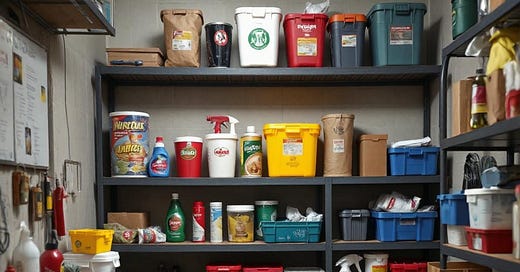



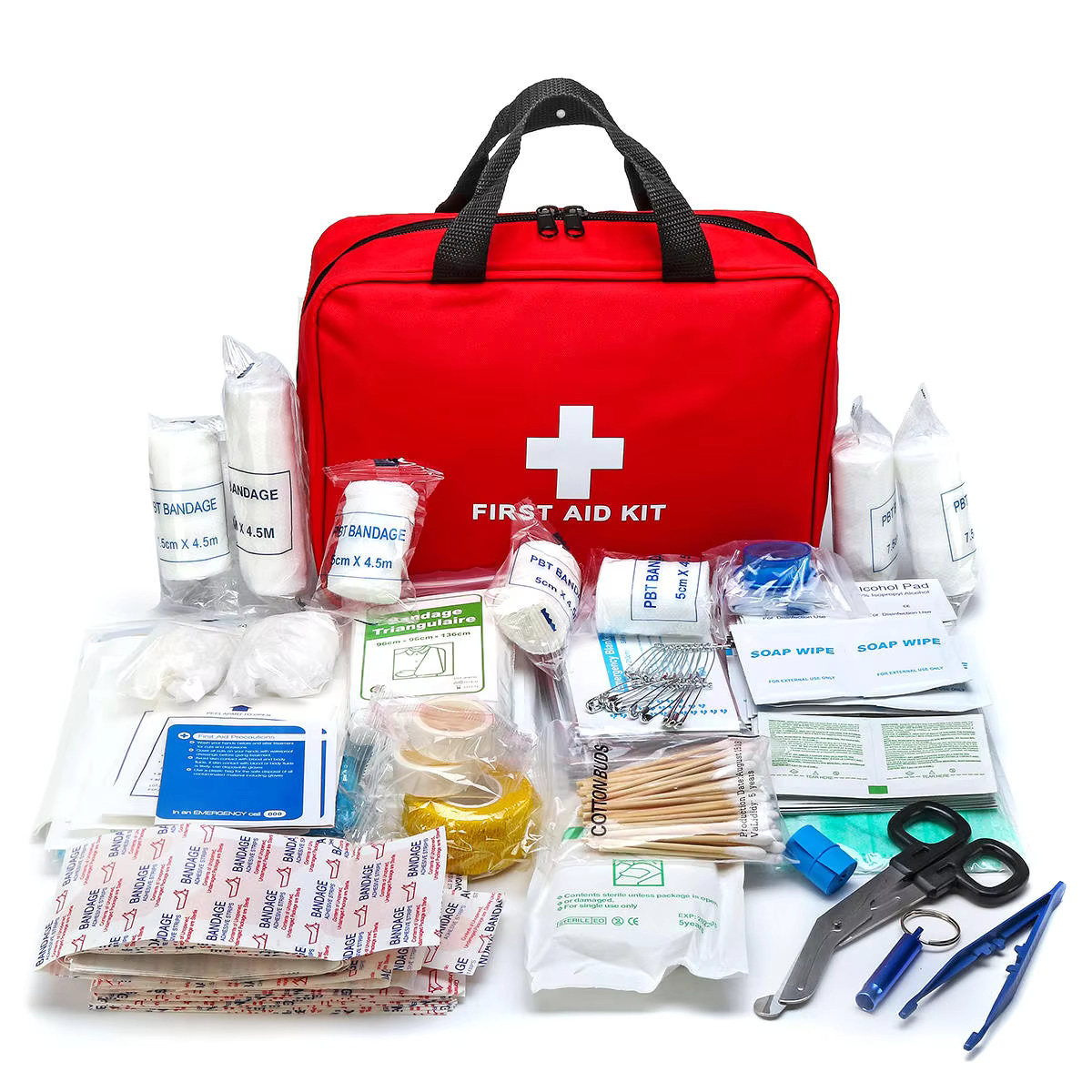
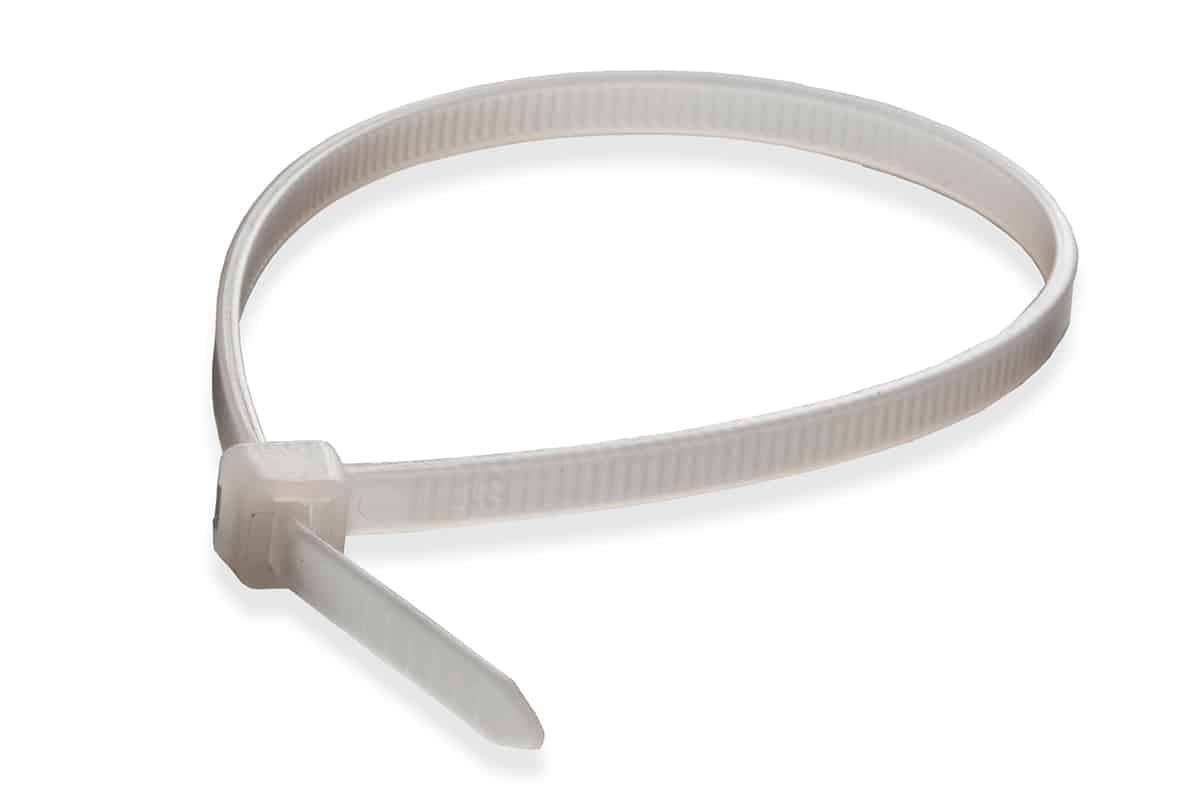
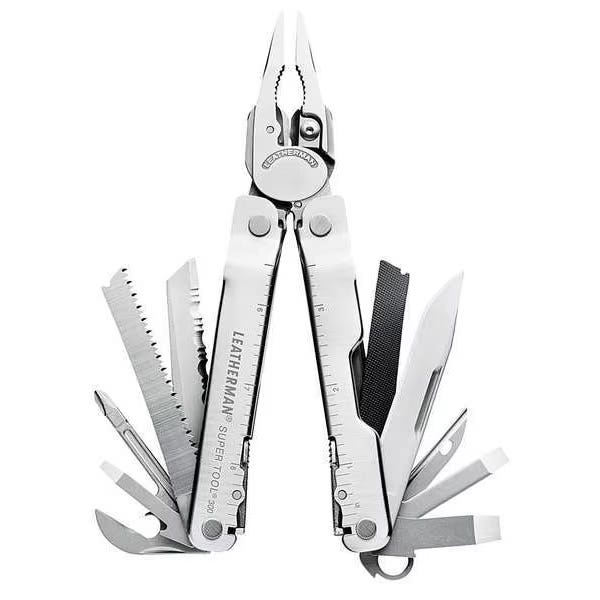
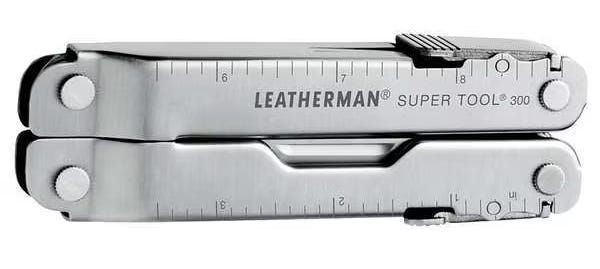
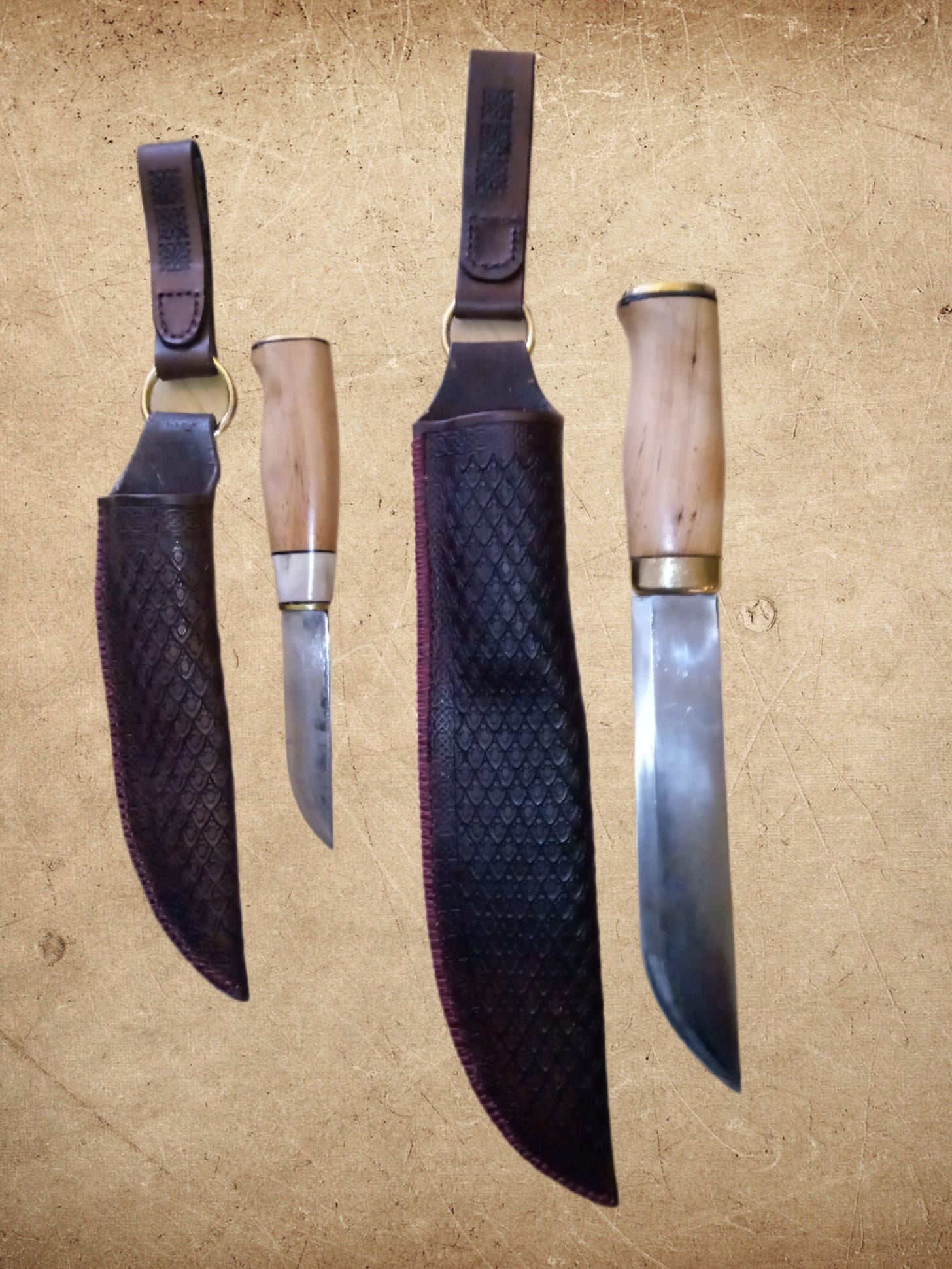

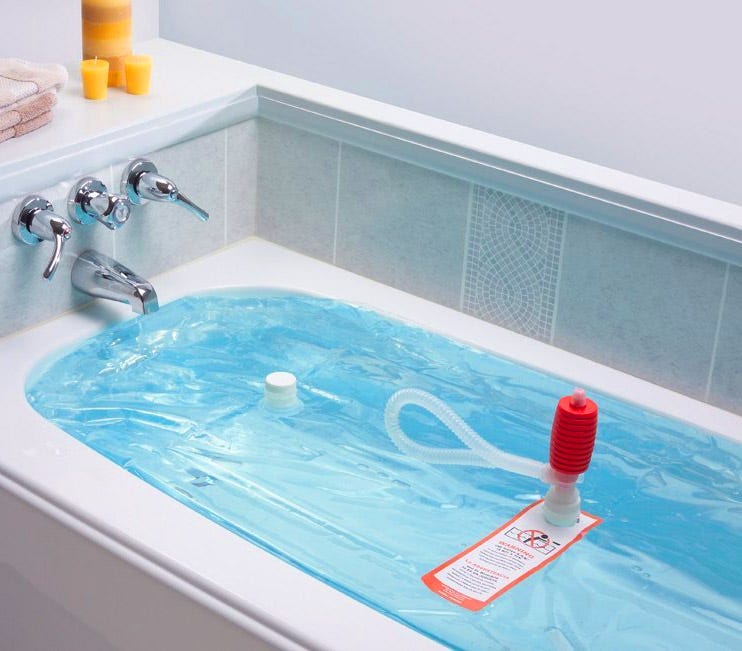
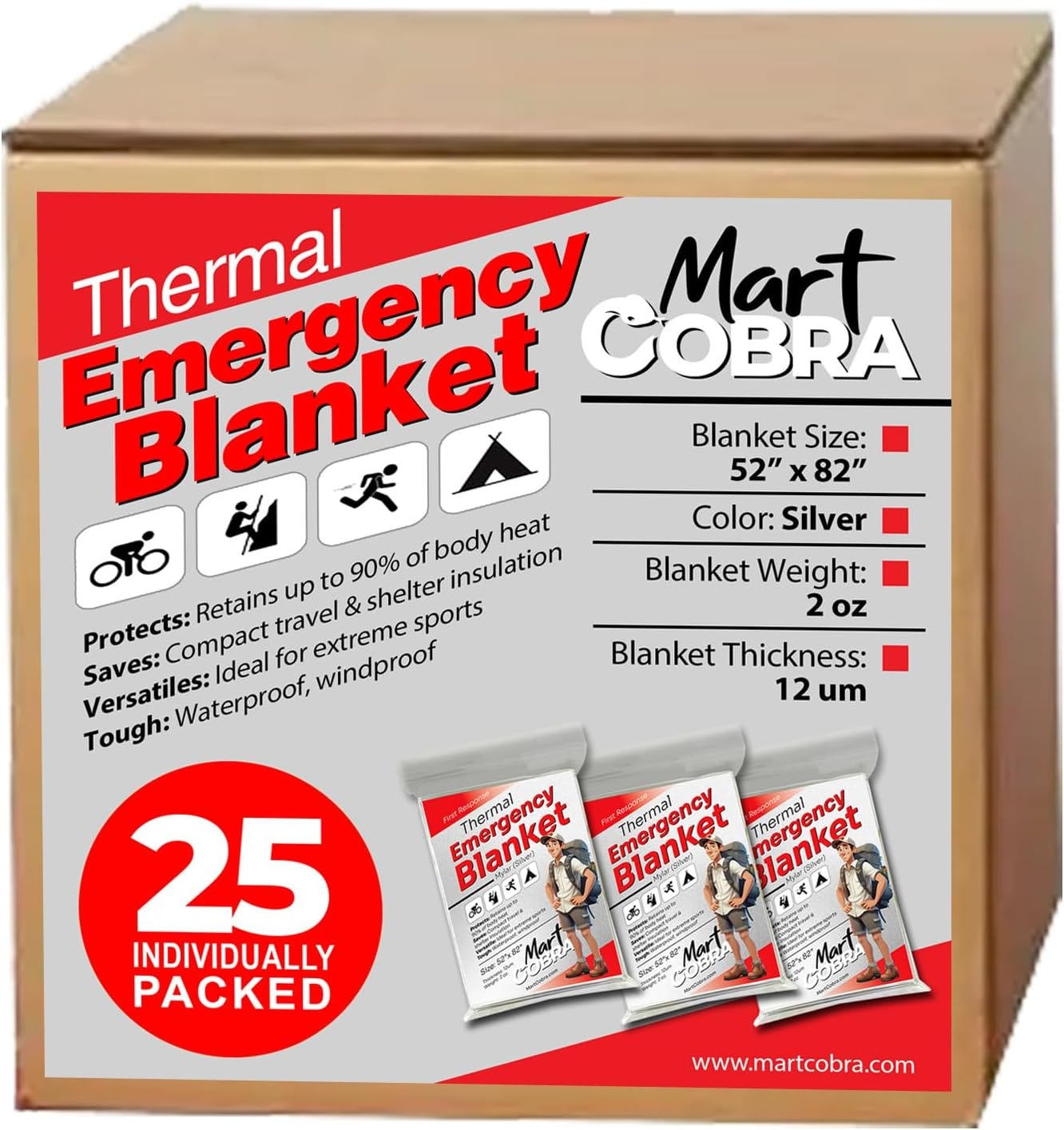
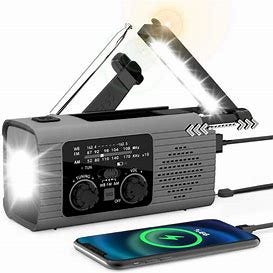


Excellent list - I have everything but the water bob, and I only skip that because of my rain catchment system (and I have a creek not too far).
One item I highly recommend also is a Jase Case - that's the cherry on the top of my first aid kits. A collection of prescription drugs can save a life, and it has a very long shelf life.
Thanks for sharing!
Glad the list was of some help to you! You think like my guy does! 😁 Happy you commented!